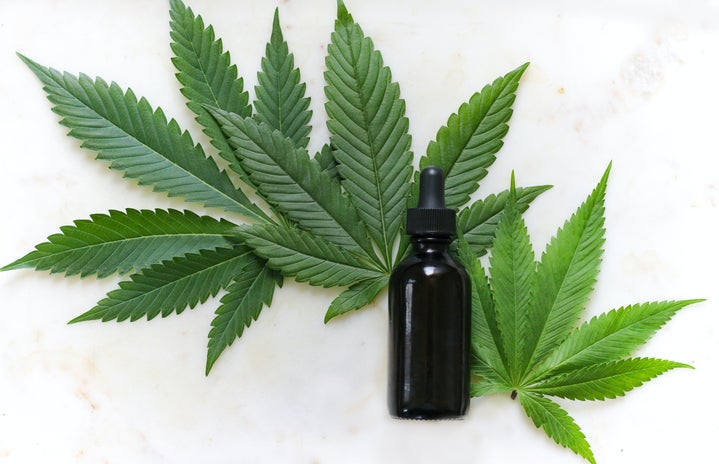Lasting over a year or more, chronic illnesses encompass a wide range of conditions that have diverse impacts on an individuals’ health. These conditions often lack a definitive cure and can present debilitating symptoms, both visible and hidden, that interfere with everyday tasks. Several examples of chronic illnesses include endometriosis, fibromyalgia, Crohn’s disease, arthritis, and others. One close to me is endometriosis, a complex disease in which tissue similar to the uterine lining (the endometrium) grows outside the uterus, affecting other organs in the body.
Since receiving my official endometriosis diagnosis, I have read countless articles and explored a variety of pain medications. Some have told me to “try yoga and warm tea”, but the reality is that endometriosis causes me to have excruciating pain that cannot be so easily remedied. Additionally, the condition has no known cure and finding an effective treatment can be challenging.
There is a common symptom that binds most of the chronic illnesses I have mentioned: inflammation. Inflammation is the body’s defense mechanism against irritants and foreign objects. While beneficial as an immune response, prolonged inflammation can be perjudicial. Chronic inflammation can lead to tissue damage, steering people into needing treatment.
Here, we can begin discussing cannabis. Medical cannabis is not a novel idea. Originating in Central and Western Asia, the Cannabis sativa plant has been used for thousands of years for a wide array of purposes, including as a source of fiber, biofuel, clothing, paper, and, most importantly, medical relief.
The earliest known record of medical cannabis dates back to 2900 BC, when the Chinese emperor Fu Hsi talked about the plant’s healing properties and how they established balance over the body, yin and yang. Around 1500 BC, cannabis was officially added to the Chinese Pharmacopeia. However, the use of medical cannabis was not limited to Chinese borders. Records indicate that it was used as a treatment for glaucoma and inflammation as early as 1213 BC in Egypt and as an anesthetic in 1000 BC in India. Over the years, the knowledge of the plant’s medicinal purposes made its way up to Europe and, eventually, the Americas.
In 1850, cannabis was added to the US pharmacopeia and was prescribed by doctors to treat a variety of ailments, including but not limited to: convulsive disorders, cholera, rabies, dysentery, alcoholism, excessive menstrual bleeding, opiate addiction, tetanus, and leprosy. In recent years, cannabis has also been used to treat Alzheimer’s, Parkinson’s, post-traumatic stress disorder, depression, anxiety, HIV/AIDS, cancer, inflammatory bowel disease, glaucoma, multiple sclerosis, anorexia, chronic pain, and more.
how does it work?
The reason why cannabis can treat all of these illnesses is because of how tetrahydrocannabinol (THC) and cannabidiol (CBD) interact with our endocannabinoid system (ECS). Discovered in the early 1990s, the ECS communicates with all of our systems to establish homeostasis, or balance over different bodily functions, including inflammation, mood, pain perception, learning and memory, etc. The ECS releases the neurotransmitters anandamide (AEA) and 2-archidonyl glycerol (2-AG), which bind to cannabinoid receptors in the brain, spinal cord, and immune cells. By binding together, the body has an anti-inflammatory response, aiding our immune system. While our bodies create these neurotransmitters naturally, when our ECS does not produce sufficient AEA or 2-AG, we become more prone to inflammatory diseases, stress, mood disorders, etc.
This is where THC and CBD come in. When cannabis is consumed, THC and CBD enter the bloodstream. THC binds to the cannabinoid receptors, giving the same effect as the neurotransmitters AEA and 2-AG whereas CBD prevents AEA from being consumed and binds to dopamine, serotonin, and opioid receptors. Additionally, CBD possesses the ability to reduce the production of cytokines, proteins produced by immune cells that promote inflammation. By reducing their production, the inflammation process is slowed and, eventually, disrupted. Because of this, by consuming cannabis, one can compensate for the lack of AEA and 2-AG and better control one’s anxiety, depression, inflammation, drug dependency, withdrawal, etc.
And so here we are.
The decision to explore this age-old remedy can be challenging due to persistent societal stigmas and concerns about potential side effects. Even some healthcare professionals may express reservations about its use. Because of this, it is incredibly important to continue researching the benefits of cannabis, so that we can all make informed decisions on the improvements it may bring and the precautions we should take.
As a member of the chronically ill community, I have seen countless testimonies of how medical cannabis has improved quality of life, mitigating debilitating symptoms and decreasing or even eliminating the use of some prescription pain medication. Knowing all of this, shouldn’t the people living under these harrowing conditions have the ability to choose what works best for them? I think so.


